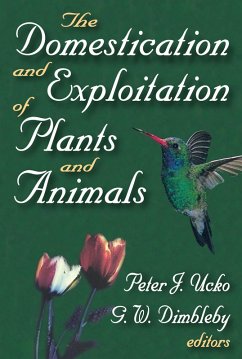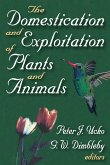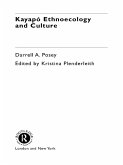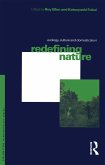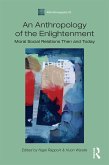The Domestication and Exploitation of Plants and Animals (eBook, ePUB)
Redaktion: Dimbleby, G. W.


Alle Infos zum eBook verschenken

The Domestication and Exploitation of Plants and Animals (eBook, ePUB)
Redaktion: Dimbleby, G. W.
- Format: ePub
- Merkliste
- Auf die Merkliste
- Bewerten Bewerten
- Teilen
- Produkt teilen
- Produkterinnerung
- Produkterinnerung

Hier können Sie sich einloggen

Bitte loggen Sie sich zunächst in Ihr Kundenkonto ein oder registrieren Sie sich bei bücher.de, um das eBook-Abo tolino select nutzen zu können.
The domestication of plants and animals was one of the greatest steps forward taken by mankind. Although it was first achieved long ago, we still need to know what led to it and how, and even when, it took place. Only when we have this understanding will we be able to appreciate fully the important social and economic consequences of this step. Even more important, an understanding of this achievement is basic to any insight into modern man's relationship to his habitat. In the last decade or two a change in methods of investigating these events has taken place, due to the mutual realization…mehr
- Geräte: eReader
- mit Kopierschutz
- eBook Hilfe
- Größe: 27.72MB
![The Domestication and Exploitation of Plants and Animals (eBook, PDF) The Domestication and Exploitation of Plants and Animals (eBook, PDF)]() The Domestication and Exploitation of Plants and Animals (eBook, PDF)52,95 €
The Domestication and Exploitation of Plants and Animals (eBook, PDF)52,95 €![Kayapó Ethnoecology and Culture (eBook, ePUB) Kayapó Ethnoecology and Culture (eBook, ePUB)]() Darrell A. PoseyKayapó Ethnoecology and Culture (eBook, ePUB)46,95 €
Darrell A. PoseyKayapó Ethnoecology and Culture (eBook, ePUB)46,95 €![The Material Subject (eBook, ePUB) The Material Subject (eBook, ePUB)]() The Material Subject (eBook, ePUB)52,95 €
The Material Subject (eBook, ePUB)52,95 €![The Growing Trend of Living Small (eBook, ePUB) The Growing Trend of Living Small (eBook, ePUB)]() The Growing Trend of Living Small (eBook, ePUB)39,95 €
The Growing Trend of Living Small (eBook, ePUB)39,95 €![Redefining Nature (eBook, ePUB) Redefining Nature (eBook, ePUB)]() Redefining Nature (eBook, ePUB)39,95 €
Redefining Nature (eBook, ePUB)39,95 €![In the Active Voice (Routledge Revivals) (eBook, ePUB) In the Active Voice (Routledge Revivals) (eBook, ePUB)]() Mary DouglasIn the Active Voice (Routledge Revivals) (eBook, ePUB)39,95 €
Mary DouglasIn the Active Voice (Routledge Revivals) (eBook, ePUB)39,95 €![An Anthropology of the Enlightenment (eBook, ePUB) An Anthropology of the Enlightenment (eBook, ePUB)]() An Anthropology of the Enlightenment (eBook, ePUB)34,95 €
An Anthropology of the Enlightenment (eBook, ePUB)34,95 €-
-
-
This volume results from presentations at the Institute of Archaeology, London University, discussing the domestication and exploitation of plants and animals. Workers in the archaeological, anthropological, and biological fields attempted to bridge the gap between their respective disciplines through personal contact and discussion. Modern techniques and the result of their application to the classical problems of domestication, selection, and spread of cereals and of cattle were discussed, but so were comparable problems in plants and animals not previously considered in this context.
Although there were differing opinions on taxonomic classification, the editors have standardized and simplified the usage throughout this book. In particular, they have omitted references to authorities and adopted the binomial classification for both botanical and zoological names. They followed this procedure in all cases except where sub-specific differences are discussed and also standardized orthography of sites.
Dieser Download kann aus rechtlichen Gründen nur mit Rechnungsadresse in A, B, BG, CY, CZ, D, DK, EW, E, FIN, F, GR, HR, H, IRL, I, LT, L, LR, M, NL, PL, P, R, S, SLO, SK ausgeliefert werden.
- Produktdetails
- Verlag: Taylor & Francis eBooks
- Seitenzahl: 607
- Erscheinungstermin: 12. Juli 2017
- Englisch
- ISBN-13: 9781351483421
- Artikelnr.: 48867568
- Verlag: Taylor & Francis eBooks
- Seitenzahl: 607
- Erscheinungstermin: 12. Juli 2017
- Englisch
- ISBN-13: 9781351483421
- Artikelnr.: 48867568
- Herstellerkennzeichnung Die Herstellerinformationen sind derzeit nicht verfügbar.
1: Environmental background
Agricultural systems, ecosystems and the origins of agriculture
The ecological background of plant domestication Introduction
Geological opportunism
Reflections on prehistoric environments in the Near East
The progenitors of wheat and barley in relation to domestication and agricultural dispersal in the Old World
2: Patterns of exploitation
The silent millennia in the origin of agriculture
Origins and ecological effects of early domestication in Iran and the Near East
Wild mammals and their potential for new domestication
Evidence for vegetation changes associated with mesolithic man in Britain
II: Methods of investigation
1: Domestication and exploitation of plants
The indirect evidence for domestication
A note on cereals in ancient Egypt
Pollen grains of Gramineae and Cerealia from Shanidar and Zawi Chemi
The archaeological evidence for the domestication of plants: methods and problems
Evidence from phylogenetic relationships of the types of bread wheat first cultivated
History and ethnography of some West Indian starches
Fruit size variability of Swiss prehistoric Malus sylvestris
2: Domestication and exploitation of animals
The genetical implications of domestication in animals
Archaeological problems and methods of recognizing animal domestication
The use of non-morphological criteria in the study of animal domestication from bones found on archaeological sites
Animal husbandry
Methodology and results of the study of the earliest domesticated animals in the Near East (Palestine)
The uses and limitations of differences in absolute size in the distinction between the bones of aurochs (Bos primigenius) and domestic cattle (Bos taurus)
A metrical distinction between sheep and goat metacarpals
Animal domestication and animal cult in dynastic Egypt
III: Regional and local evidence for domestication
Early domestic animals in India and Pakistan
Early cultivated plants in India and Pakistan
The problem of the introduction of Adansonia digitata into India
Carnivore remains from the excavations of the Jericho Tell
Some difficulties of interpreting the metrical data derived from the remains of cattle at the Roman settlement of Corstopitum
Plant remains and early farming in Jericho 1
The pattern of animal domestication in the prehistoric Near East
Animal domestication in the Neolithic cultures of the south-west part of European U.S.S.R.
Early cereal cultivation in China
Early cereal cultivation in China
IV: Studies of particular taxonomic groups
1: Plants
The origins of yam cultivation Introduction
The origin, variability and spread of the groundnut (Arachis hypogaea)
The domestication of chili peppers
Evolution of American Phaseolus beans under domestication
Some domesticated lower plants in South-east Asian food technology
2: Animals
The domestication of the horse
The exploitation of molluscs
The Mesopotamian onager as a draught animal
The domestication of the ferret
Changes in the fleece of sheep following domestication (with a note on the coat of cattle)
V: Human nutrition
Human nutrition: evolutionary perspectives
Dietary variation and the biology of earlier human populations
Archaeology and the nutritionist
Conclusion
Conclusion
1: Environmental background
Agricultural systems, ecosystems and the origins of agriculture
The ecological background of plant domestication Introduction
Geological opportunism
Reflections on prehistoric environments in the Near East
The progenitors of wheat and barley in relation to domestication and agricultural dispersal in the Old World
2: Patterns of exploitation
The silent millennia in the origin of agriculture
Origins and ecological effects of early domestication in Iran and the Near East
Wild mammals and their potential for new domestication
Evidence for vegetation changes associated with mesolithic man in Britain
II: Methods of investigation
1: Domestication and exploitation of plants
The indirect evidence for domestication
A note on cereals in ancient Egypt
Pollen grains of Gramineae and Cerealia from Shanidar and Zawi Chemi
The archaeological evidence for the domestication of plants: methods and problems
Evidence from phylogenetic relationships of the types of bread wheat first cultivated
History and ethnography of some West Indian starches
Fruit size variability of Swiss prehistoric Malus sylvestris
2: Domestication and exploitation of animals
The genetical implications of domestication in animals
Archaeological problems and methods of recognizing animal domestication
The use of non-morphological criteria in the study of animal domestication from bones found on archaeological sites
Animal husbandry
Methodology and results of the study of the earliest domesticated animals in the Near East (Palestine)
The uses and limitations of differences in absolute size in the distinction between the bones of aurochs (Bos primigenius) and domestic cattle (Bos taurus)
A metrical distinction between sheep and goat metacarpals
Animal domestication and animal cult in dynastic Egypt
III: Regional and local evidence for domestication
Early domestic animals in India and Pakistan
Early cultivated plants in India and Pakistan
The problem of the introduction of Adansonia digitata into India
Carnivore remains from the excavations of the Jericho Tell
Some difficulties of interpreting the metrical data derived from the remains of cattle at the Roman settlement of Corstopitum
Plant remains and early farming in Jericho 1
The pattern of animal domestication in the prehistoric Near East
Animal domestication in the Neolithic cultures of the south-west part of European U.S.S.R.
Early cereal cultivation in China
Early cereal cultivation in China
IV: Studies of particular taxonomic groups
1: Plants
The origins of yam cultivation Introduction
The origin, variability and spread of the groundnut (Arachis hypogaea)
The domestication of chili peppers
Evolution of American Phaseolus beans under domestication
Some domesticated lower plants in South-east Asian food technology
2: Animals
The domestication of the horse
The exploitation of molluscs
The Mesopotamian onager as a draught animal
The domestication of the ferret
Changes in the fleece of sheep following domestication (with a note on the coat of cattle)
V: Human nutrition
Human nutrition: evolutionary perspectives
Dietary variation and the biology of earlier human populations
Archaeology and the nutritionist
Conclusion
Conclusion
